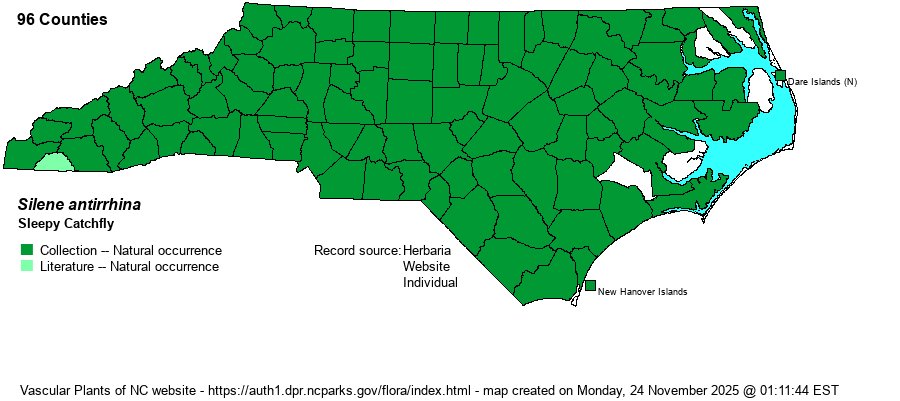| Author | L. | |
| Distribution | Statewide, and almost certainly found in all 100 counties.
This is a very widespread species, found throughout the continent. | |
| Abundance | Fairly common to frequent throughout, though not really common, despite the map making it appear so. It has perhaps declined in recent decades with the decline of old field habitats. | |
| Habitat | This is a weedy native, growing in old fields, powerline clearings, meadows, roadsides, and other mostly sunny disturbed sites. | |
| Phenology | Blooms from April to July, and fruits soon after flowering. | |
| Identification | This is a rather familiar, but very easily overlooked, and slender herb that grows mostly unbranched to about 1.5-2 feet tall. It is easily identified by dark sticky bands between most of the leaf nodes along the stem. The paired leaves are mainly ascending, linear to narrowly elliptic, about 1.5 inches long but only 1/3-inch wide, with entire margins. The upper part of the stem has a few short branches for the very open inflorescence. One small flower tops each branch, with a distinctly swollen ovary, with 5 small white to pink petals barely extending past the green sepals, spreading but not often seen. You are most likely to see it with the swollen, barrel-shaped capsules, though each is only about 1/4-inch long. The combination of the black and sticky bands on the stem and the small barrel-shaped capsules should suffice for identification. As mentioned above, you can easily walk past this species on a walk in a field or powerline clearing, especially as they do not occur in dense patches but more often just as scattered individuals. | |
| Taxonomic Comments | None
| |
| Other Common Name(s) | Sleepy Silene | |
| State Rank | S5 | |
| Global Rank | G5 | |
| State Status | | |
| US Status | | |
| USACE-agcp | | |
| USACE-emp | | |

